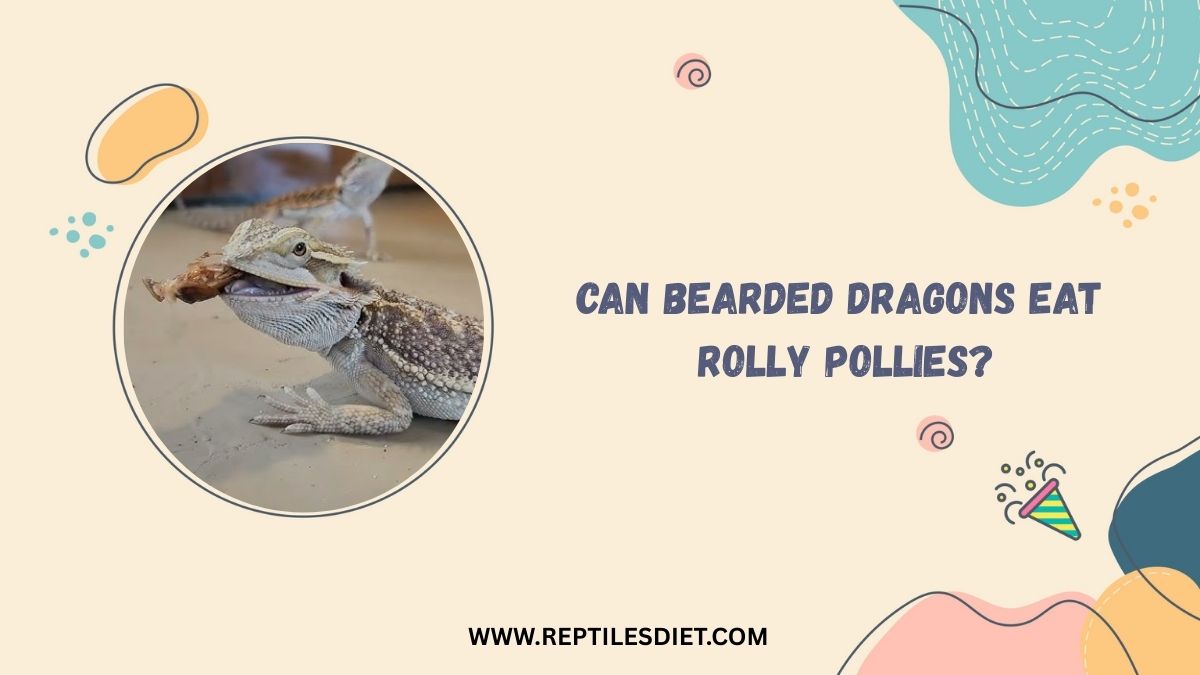Hey there, bearded dragon lovers! If you’re wondering, “Can bearded dragons eat rolly pollies?” you’re in the right place.
Bearded dragons can safely eat a few rolly pollies (pill bugs) as an occasional treat if captive-bred and gut-loaded. Avoid wild ones due to pesticides and parasites. Always consult a vet.
This comprehensive guide explores the suitability of rolly pollies in a bearded dragon’s diet, examining their nutritional value, potential risks, and best practices for feeding.
Rolly pollies are small crustaceans, not true insects, belonging to the isopod family (Armadillidiidae).
Commonly found in damp, dark environments like gardens, under rocks, or leaf litter, they play a vital role in ecosystems by breaking down decaying plant matter.
Their unique ability to roll into a tight ball when threatened makes them a fascinating potential food source for reptiles like bearded dragons.
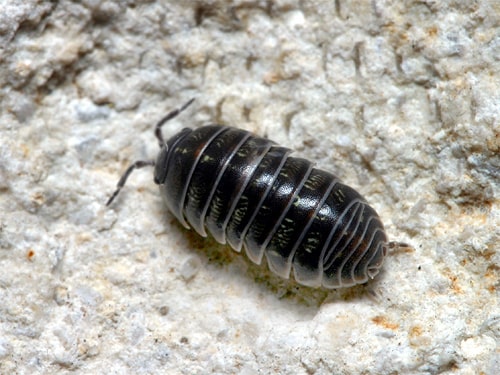
The name “rolly polly” comes from their defensive behavior of curling into a ball, resembling a tiny pill or potato.
Due to this characteristic and their habitat preferences, they’re also called pill bugs, woodlice, or potato bugs. The scientific term for these creatures is isopods, reflecting their crustacean classification.
Rolly pollies offer some nutritional benefits when fed sparingly:
- Protein: They are essential for growth, particularly in juvenile bearded dragons.
- Calcium: Their exoskeleton contains calcium, supporting bone health and preventing metabolic bone disease.
- Low Fat: Compared to insects like mealworms, rolly pollies are low in fat, making them a healthier occasional treat.
- Environmental Enrichment: In bioactive vivariums, rolly pollies encourage natural foraging behavior and help maintain a clean enclosure by consuming waste.
However, their nutritional value is lower than staple feeder insects like crickets or phoenix worms, so they should not be a primary food source.
While rolly pollies can be safe in moderation, several risks must be considered:
Wild-caught rolly pollies from gardens or yards may carry pesticides, herbicides, or fertilizers, which can be toxic to bearded dragons, potentially causing illness or death.
Wild rolly pollies may harbor parasites or bacteria, such as Salmonella, which can lead to digestive issues, lethargy, or severe health problems in bearded dragons.
The rugged, chitin-rich exoskeleton of rolly pollies can be complex for bearded dragons to digest, especially for juveniles, potentially causing impaction or digestive blockages.
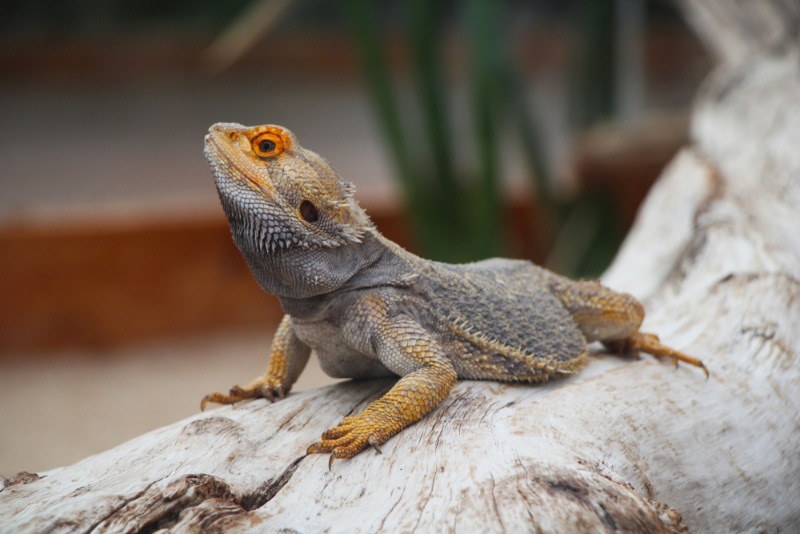
Their small, round shape poses a choking risk, particularly for baby bearded dragons who may not chew properly.
Rolly pollies lack the balanced nutrient profile of other feeder insects. Over-reliance can lead to deficiencies or obesity.
Feeding too many rolly pollies can exacerbate the above risks, including impaction and nutritional imbalances, especially if not gut-loaded or appropriately supplemented.
For a safer and more balanced diet, consider these alternatives, especially for Canadian owners unable to access Dubia roaches due to import restrictions:
- Crickets: A staple feeder, high in protein, and widely available. To minimize parasite risks, source from reputable suppliers and gut-load with nutritious foods.
- Phoenix Worms: High in calcium and protein, these are an excellent choice for all ages and are easy to digest.
- Silkworms: Low in fat and high in protein, silkworms are a nutritious treat from specialty breeders.
- Black Soldier Fly Larvae: Also known as calcium worms, these are nutrient-dense and safe for bearded dragons.
- Mealworms: Suitable as an occasional treat for adults due to higher fat content, but avoided for juveniles.
Compared to rolly pollies, crickets and phoenix worms offer higher protein and better digestibility.
Silkworms and black soldier fly larvae provide a more balanced nutrient profile, making them superior choices for regular feeding. Rolly pollies’ calcium content is beneficial, but their hard exoskeleton limits their overall value.
To safely feed rolly pollies:
- Source Captive-Bred: Purchase from pet stores or reputable breeders to avoid pesticides and parasites.
- Gut-Load: Feed rolly pollies nutrient-rich foods (e.g., carrots, greens) for 24–48 hours before offering them to your dragon.
- Dust with Supplements: Use calcium powder every other feeding (daily for juveniles) and multivitamins 1–2 times weekly.
- Feed Sparingly: Limit to 2–3 rolly pollies per week for adults; avoid babies due to choking risks.
- Clean Thoroughly: Rinse captive-bred rolly pollies with water to remove contaminants.
- Use a Feeding Container: Prevent substrate ingestion by feeding in a separate dish or tank.
- Monitor Health: Watch for signs of distress (e.g., vomiting, lethargy) and consult a vet if issues arise.
Pulling together best practices:
| Factor | Recommendation |
| Source | Use captive-bred rolly pollies or ensure wild ones are from pesticide-free zones |
| Preparation | Rinse thoroughly; some sources even suggest boiling to kill pathogens (IAdoreAnimals) |
| Frequency | Limit to occasional treats, not staple—e.g., 1–2 per day or 2–3 per week |
| Portion Size | Keep small to prevent impaction |
| Supplementation | Dust with calcium/vitamin powder to make up for nutritional gaps |
| Monitoring | Observe your dragon’s health post-feeding (eating, digestion, stool, behavior) |
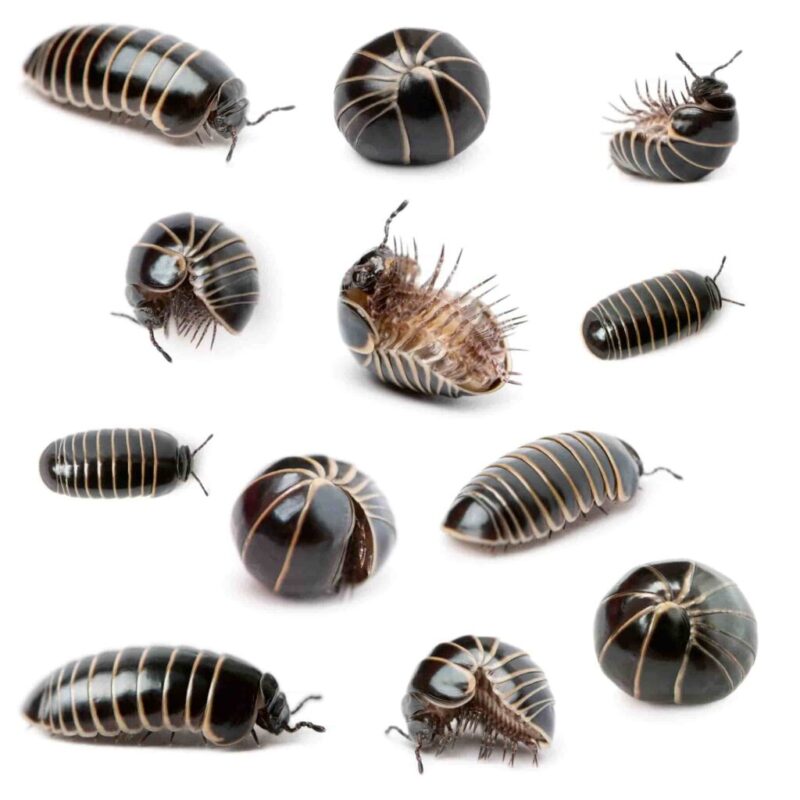
Rolly pollies are safe as an occasional treat if captive-bred, gut-loaded, and fed in moderation. Wild rolly pollies are not secure due to contamination risks.
Bearded dragons can eat crickets, phoenix worms, silkworms, black soldier fly larvae, and mealworms (sparingly for adults).
Always source from reputable suppliers to avoid parasites, especially in Canada, where options like Dubia roaches are restricted.
Rollie pollies aren’t the best food choice for bearded dragons. They can carry pesticides, parasites, or be hard to digest.
Offering one occasionally might not harm, but safer insects like crickets or roaches are better daily options.
Yes, avoid:
- Fireflies/Glow Worms: Contains toxins that can be fatal.
- Wasps, Hornets, and Spiders May sting or carry harmful toxins.
- Wild-Caught Insects: Risk pesticides and parasites.
Yes, sparingly, if they’re captive-bred and adequately prepared. Avoid wild ones and limit to 2–3 per week for adults.
Pill bugs (woodlice) are the same as rolly pollies. They can be fed occasionally if captive-bred but follow the same precautions.
Bearded dragons should not eat earwigs. These bugs have strong pincers, hard shells, and sometimes carry harmful bacteria or chemicals.
Feeding them could cause injuries or stomach issues. Stick to safe feeder insects raised for reptiles instead.
Yes, bearded dragons can eat grasshoppers if they are pesticide-free and bred for reptiles. They are high in protein and a fun hunting challenge.
Avoid wild-caught grasshoppers since they might contain toxins, parasites, or dangerous chemicals.
If your bearded dragon ate a wild roly-poly, monitor for signs of distress (e.g., lethargy, vomiting, diarrhea). Contact a reptile vet immediately if symptoms appear, as wild rolly pollies may carry toxins or parasites.
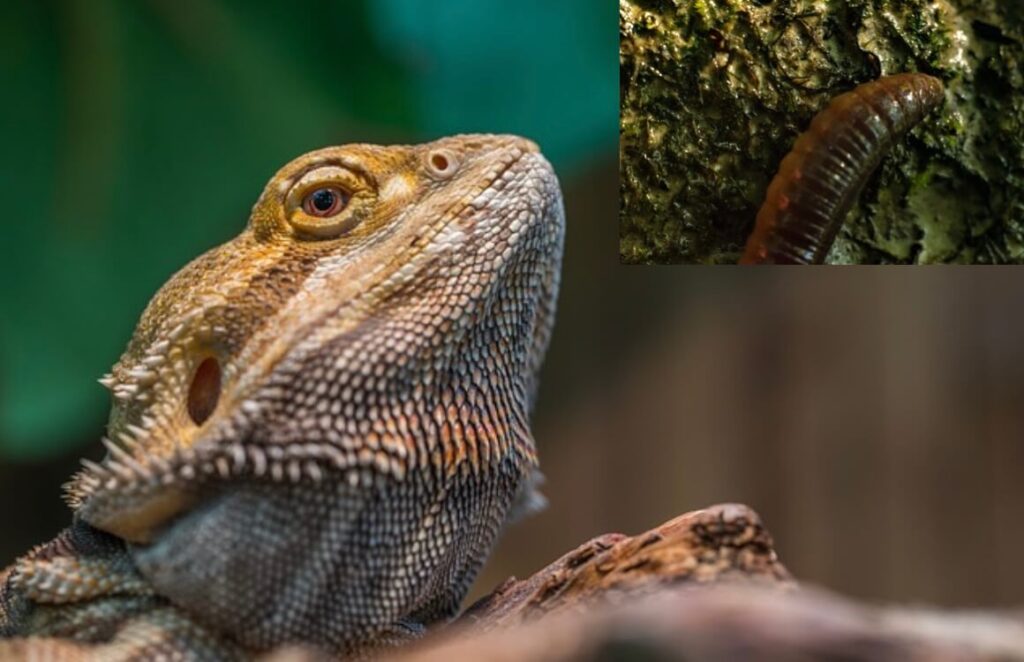
Bearded dragons can eat pill bugs/rolly pollies as a treat, but only if captive-bred and gut-loaded. Avoid overfeeding due to their hard exoskeleton and lower nutritional value.
Due to their limited nutritional profile, no reptiles should rely on rolly pollies as a primary diet. However, bearded dragons, leopard geckos, and some skinks can eat them occasionally as part of a varied diet.
If it was captive-bred, there’s likely no cause for concern if fed sparingly. If wild-caught, watch for symptoms like lethargy or digestive issues and consult a vet promptly.
This is concerning due to potential pesticides or parasites. Contact a reptile vet immediately and monitor for vomiting, diarrhea, or lethargy. Avoid feeding wild insects in the future.
Never feed wild pill bugs to bearded dragons or other reptiles due to pesticides, parasites, and bacteria risks. Always use captive-bred sources.
Yes, Dubia roaches are an excellent, nutrient-rich staple, but they’re unavailable in Canada due to import laws. Opt for crickets or phoenix worms instead.
Yes, earthworms are safe if sourced from reputable suppliers (not wild). They’re high in protein but should be fed sparingly due to high moisture content.
Slugs are not recommended due to their high slime content, which can cause digestive issues and the risk of parasites in wild slugs.
No, ants are unsafe due to their small size (choking hazard), potential to bite, and possible toxin content in some species.
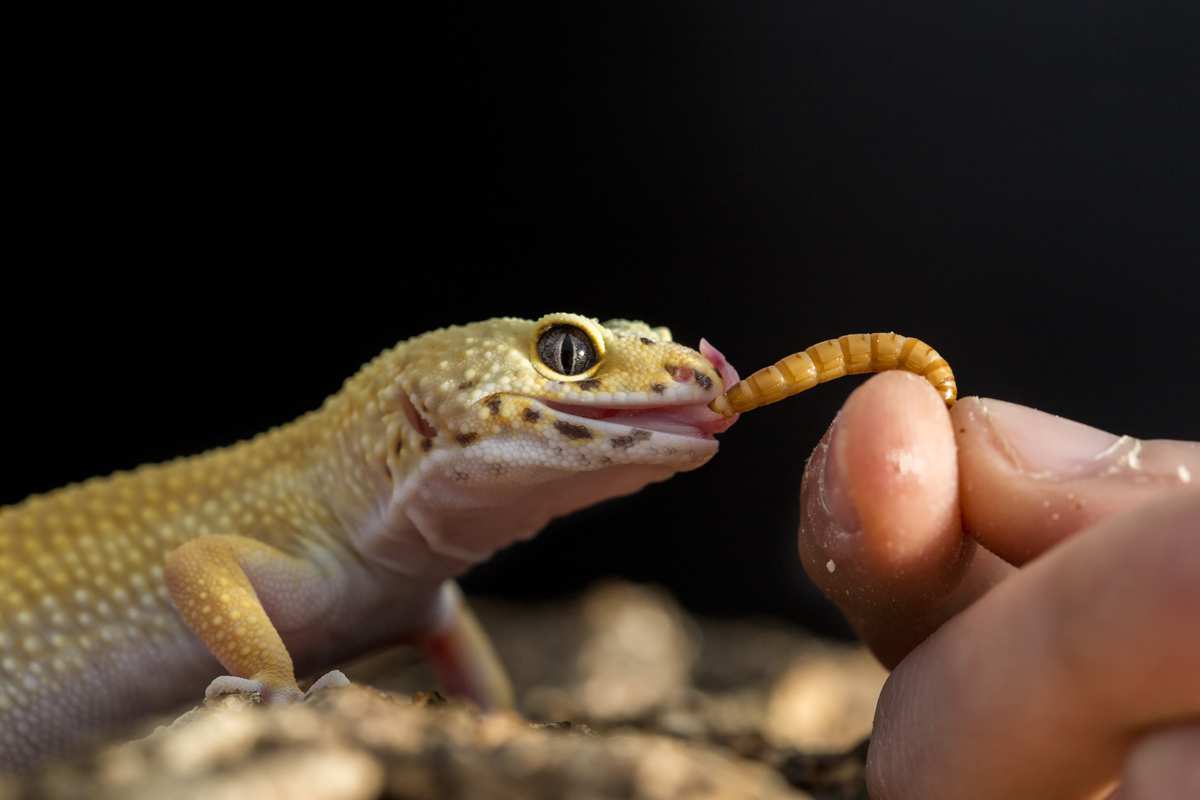
Some lizards, like bearded dragons and leopard geckos, can eat rolly pollies as an occasional treat if captive-bred. However, they’re not a primary food source for any lizard species.
Safe bugs include crickets, phoenix worms, silkworms, black soldier fly larvae, and mealworms (for adults). Always source from reputable suppliers.
No, centipedes are dangerous due to their venomous bites and potential toxins. Never feed them to bearded dragons.
In the wild, rolly pollies are eaten by birds, frogs, toads, spiders, and some lizards. In captivity, bearded dragons and leopard geckos can eat them sparingly.
Limit to 2–3 per week for adult bearded dragons as a treat. Avoid for juveniles due to choking and digestion risks.
Leopard geckos can eat captive-bred rolly pollies occasionally, but their hard exoskeleton may be tough to digest. Stick to crickets and mealworms as staples.
Isopods (like rolly pollies) are safe as an occasional treat if captive-bred and gut-loaded. Follow the same guidelines as for rolly pollies.
Some lizards, like bearded dragons and leopard geckos, can eat rolly pollies sparingly if sourced safely. They’re not suitable for all lizard species.
Humans can technically eat rolly pollies (non-toxic crustaceans), but they’re not a common food source and offer little nutritional value. They’re better suited as reptile treats.
Birds, frogs, toads, spiders, and some reptiles like bearded dragons and leopard geckos eat rolly pollies in the wild or captivity.
Rolly pollies typically live 1–2 years under optimal conditions, depending on species and environment.
Yes, rolly pollies absorb moisture through their bodies and food, thriving in damp environments. They don’t drink water like vertebrates.
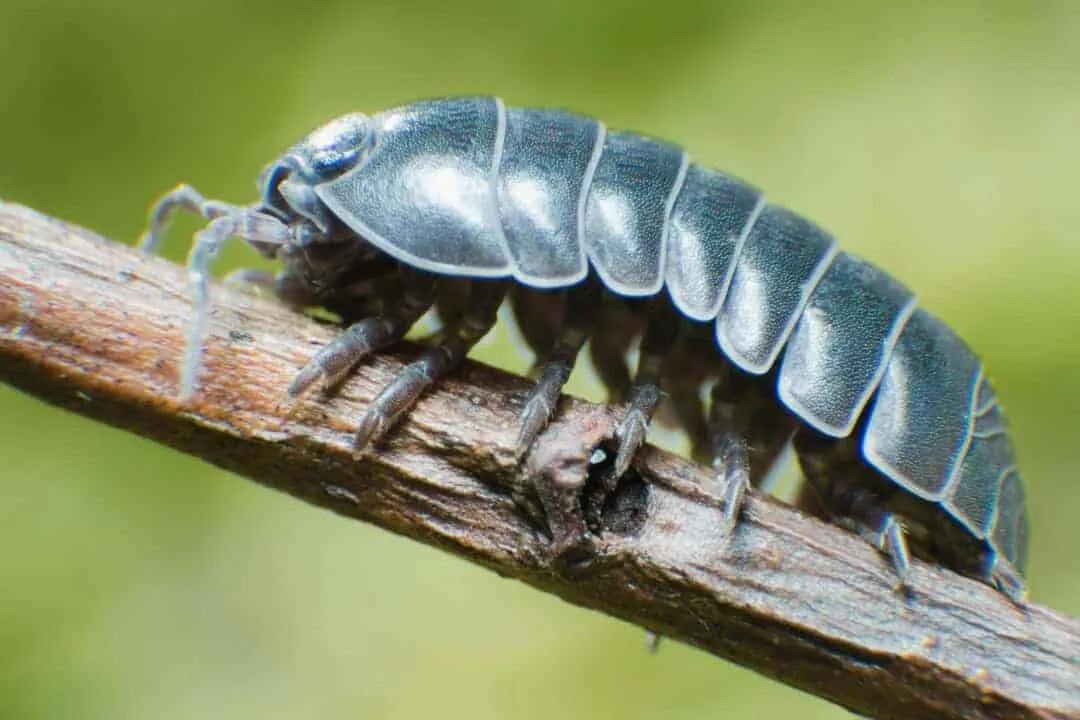
Female rolly pollies carry eggs in a marsupium pouch, hatching tiny offspring after a few weeks.
The scientific name is isopod, specifically Armadillidiidae, for common rolly pollies. They’re also called pill bugs or woodlice.
If your bearded dragon ate a wild insect (e.g., rolly polly, ant), monitor for symptoms like vomiting or lethargy and contact a reptile vet immediately.
No, wild rolly pollies risk introducing pesticides, parasites, or bacteria. Use captive-bred isopods for bioactive setups or as occasional food.
For Canadian bearded dragon owners, focus on:
- Crickets: Source from reputable suppliers to minimize parasite risks. Gut-load with nutritious foods.
- Phoenix Worms: High in calcium, widely available, and safe.
- Silkworms: Order from specialty breeders for a nutrient-rich option.
- Black Soldier Fly Larvae: Easy to digest and nutrient-dense.
- Mealworms: Use sparingly for adults due to higher fat content.
Rotate these insects and dust with calcium/multivitamin supplements. Combine with fresh vegetables like collard greens and squash for a balanced diet.
No, rolly pollies are not reptiles. They are small land crustaceans that live in damp, dark outdoor places.
Rolly pollies don’t drink water like animals. They absorb moisture from damp soil, leaves, and other wet surfaces.
Roly-polies can survive a few days without food but need moist places and decaying plants to stay healthy.
They might fall or get flipped over. Sometimes, illness or old age causes them to lie on their backs.
Avoid bugs with bright colors, wild-caught bugs, fireflies, spiders, and any bugs treated with pesticides—they can be toxic.
No, wild isopods might carry parasites, chemicals, or diseases that can sicken your bearded dragon.
Yes, but only if they’re captive-bred and your terrarium is clean, chemical-free, and safe for both species.
Bearded dragons should never eat fireflies, ladybugs, or bugs sprayed with chemicals. These can poison or kill them.
Yes, but only occasionally and from safe sources. Wild pill bugs are risky and can harm your bearded dragon.
No, baby bearded dragons can’t digest them well. Their shells are too complex and may cause serious digestion problems.
Bearded dragons can eat rolly pollies as an occasional treat if they’re captive-bred, gut-loaded, and fed sparingly (2–3 per week for adults). Their calcium and protein content is beneficial, but risks like pesticide exposure, hard exoskeletons, and choking hazards make them unsuitable as staples. For Canadian owners, crickets, phoenix worms, and silkworms are excellent alternatives to restricted Dubia roaches. Always prioritize reputable sources, proper preparation, and a varied diet to keep your bearded dragon healthy. Consult a reptile veterinarian for personalized advice if you’re unsure about feeding rolly pollies or other insects.
